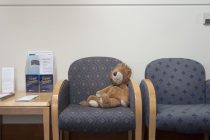Transportation Security
Posted on March 12th, 2013 by Bryanna DavisIndividuals who choose to study aviation in the US mean they will be working in and around airports every day. Airport hubs in the US like Atlanta International Airport, Boston Logan International Airport, Los Angeles International Airport, and Bush Intercontinental Airport have thousands of people travel through them every day. Even regional airports have hundreds of busy passengers boarding the plane, leaving the terminal and checking multiple bags of luggage. Airports can be a chaotic place with delayed flights, inclement weather, gate changes and late passengers. Those working in aviation positions in the US work along-side the Transportation Security Administration. International students looking to study aviation in the US should familiarize themselves with this administration and the safety regulations they impose.
The Transportation Security Administration is part of the US Department of Homeland Security. It consists of 50,000 security officers, inspectors, directors, air marshals and managers. The Transportation Security Administration was created after 9/11 to strengthen national security. So far, the Transportation Security Administration has screened more than 4 billion checked bags for explosives since its creation, detected 1,100 firearms in carry-on bags in 2011 and screens more than 1.7 million passengers a day.
However, recent outrage from passengers has come about because of the Transportation Security Administration’s advanced imaging technology, a device that takes a scan of your body to check for unauthorized devices, such as weapons. So far there are 540 imaging technology machines at more than 100 US airports. Since the body scan is more detailed than an x-ray, many people claim it is intrusive. If you decline the scanner, you must get a full body pat down, this process is more detailed than before the imaging technology was put into place.
At the end of the day, the goal of Transportation Security Administration is to keep chaotic airports safe so that passengers can get to their destinations and aviation employees can do their job.



